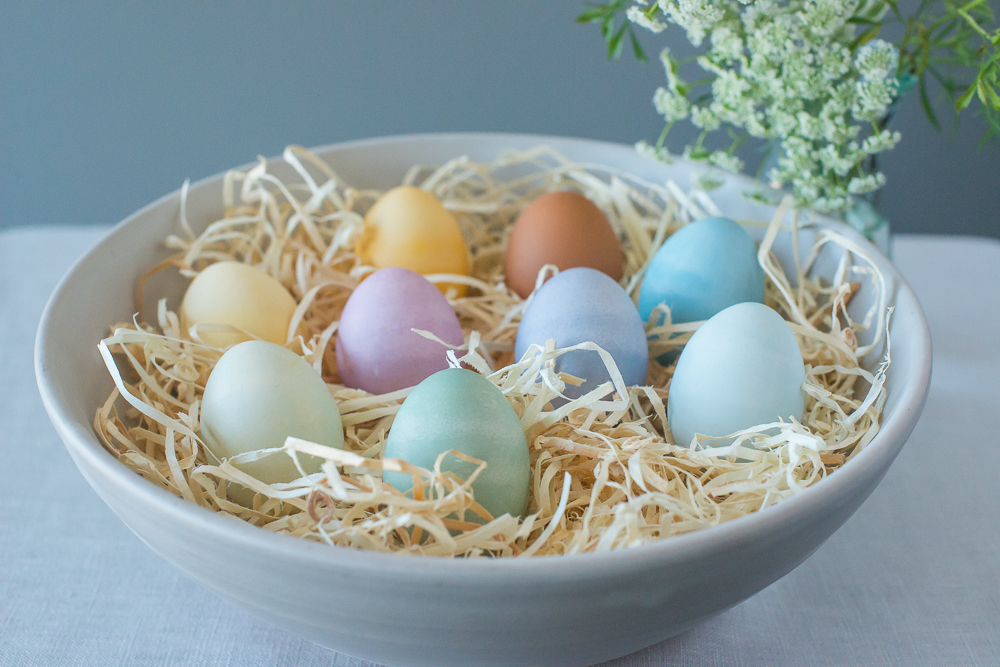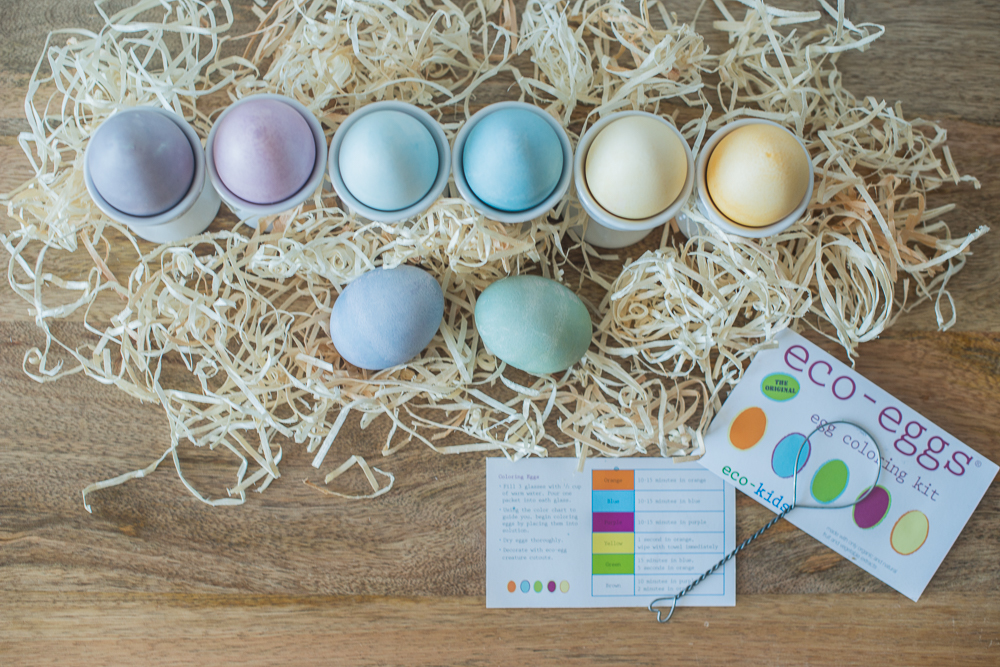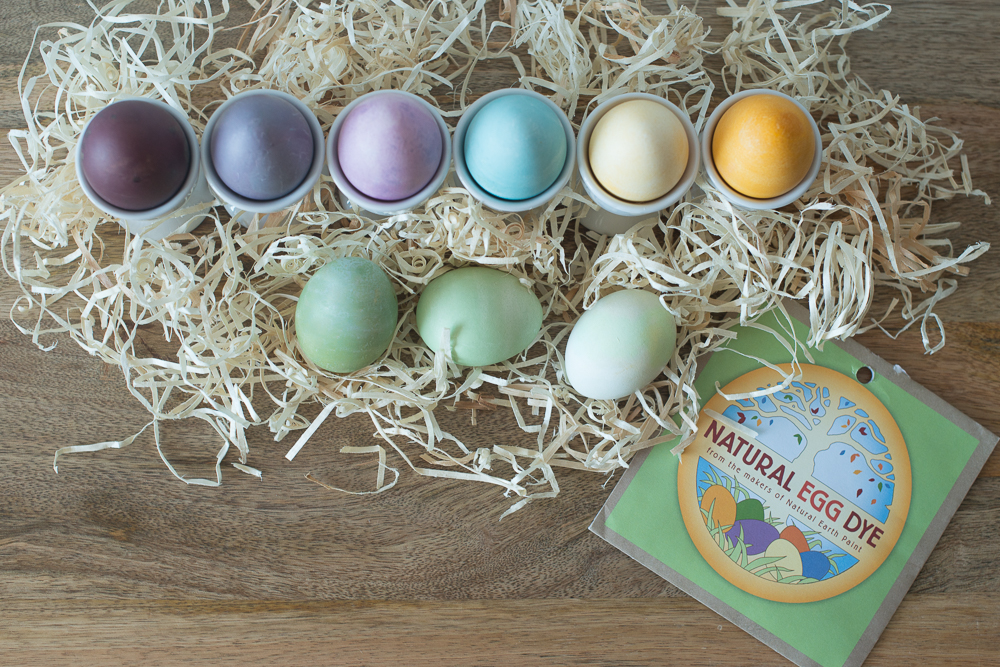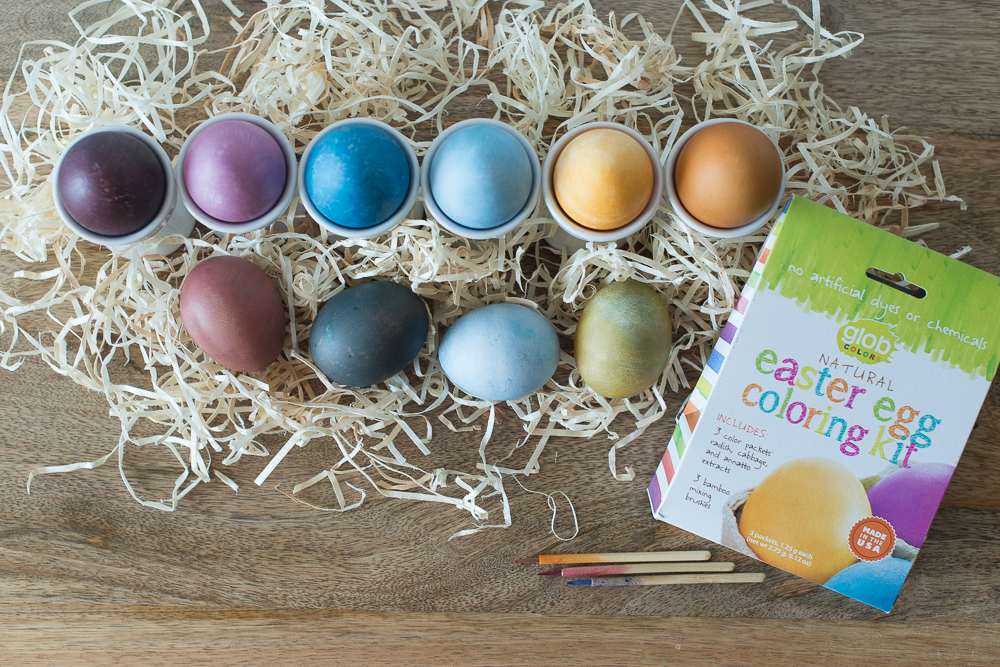 This year, instead of picking up the conventional box of egg dying tablets, we sourced three all natural brands that use fruit and vegetable extracts. We were happy to replace the toxic color additives like Red No. 3 and Yellow No. 5 with natural ingredients like radish, cabbage, and sweet potato. Dying eggs the natural way makes it safe for children of all ages. It also provides an opportunity to teach your kids about alternative craft methods that are healthier for them and environmentally responsible. Each of these small companies was conceived by a parent, who wanted to offer an environmentally safe alternative to toxic commercial art supplies. We are enamored by their efforts and would like to bring their labors of love to you and your family. We spent an afternoon on The Meadow dying dozens of eggs and comparing the results. Perhaps our findings will help you decide which brand is best for you.
This year, instead of picking up the conventional box of egg dying tablets, we sourced three all natural brands that use fruit and vegetable extracts. We were happy to replace the toxic color additives like Red No. 3 and Yellow No. 5 with natural ingredients like radish, cabbage, and sweet potato. Dying eggs the natural way makes it safe for children of all ages. It also provides an opportunity to teach your kids about alternative craft methods that are healthier for them and environmentally responsible. Each of these small companies was conceived by a parent, who wanted to offer an environmentally safe alternative to toxic commercial art supplies. We are enamored by their efforts and would like to bring their labors of love to you and your family. We spent an afternoon on The Meadow dying dozens of eggs and comparing the results. Perhaps our findings will help you decide which brand is best for you.
Wishing you a very Happy Easter!
~Mead Meadow
TIPS:
- To begin, DO NOT dye eggs in your Sunday best! These natural dyes are powerful and can easily stain fabrics and surfaces. We suggest that you wear craft friendly clothes and line your table with a protective covering like newspaper or a plastic table cloth. Also, hard boil your eggs ahead of time so they can cool before little hands are holding them.
- If you can’t remember which carton of eggs is hard boiled and which is raw, try spinning an egg on a smooth surface like you would a top. If the egg is hard boiled, it will spin nicely – if it’s raw, the movement of the yolk will cause it not to spin.

ECO- KIDS ECO- EGGS COLORING KIT: made in Maine
Meet Cammie, Kip & their kids Jack, Maggie and Gus. They are eco-kids® — a family run business that produces all natural art supplies.
These dyes were ideal for us as we were looking to create lighter pastel colors. This kit was incredibly thoughtful, and included thorough instructions for mixing colors, suggested dying times, and no vinegar was required for any of the dyes. Best of all, this was the only kit that came with a wire egg dipper! They also offered printable activity sheets from their website to help keep your kids occupied while the eggs are coloring. Brilliant!
Because these dyes resulted in lighter pastel colors, we feel that white eggs work best. The suggested dying times are much longer than we needed to achieve the pastel colors in the photo above. Keep in mind that there is not enough liquid to completely submerge the egg – you will need to rotate it with the wire dipper or a spoon to achieve even coloring.
INCLUDED:
- 3 natural dyes made with gardenia flower, curcumin, annatto seeds, beets, red cabbage and purple sweet potato
- 1 hand crafted wire dipper
- 1 eco-crayon
- 1 card of dyeing instructions to achieve mixed colors
GLOB NATURAL EASTER EGG COLORING KIT: made in California
GLOB was conceived by artist and teacher Ashely Phelps. She had experienced bad reactions to chemical additives in art supplies and began to search for a way to create a healthy, all natural solution.
We grew to love the deep vibrant colors that this kit provided, even though they weren’t exactly what we were looking for when we started. Because the dyes were so powerful, we were able to achieve a wide spectrum of colors using both brown, and white eggs. Keep in mind that brown eggs will take longer to pick up the pigment. The colors are very thick and call for very little liquid – you will need rotate the egg with a spoon to achieve even coloring. Two of the dyes required us to add vinegar.
INCLUDED:
- 3 natural dyes made with radish, cabbage, and annatto extracts
- 3 bamboo mixing brushes
- 1 card of dyeing instructions to achieve mixed colors as well as other dying ideas

NATURAL EGG DYE: Made in the USA
Leah Fanning Mebane began making natural paints to eliminate all toxins from her art studio in 2009, immediately after becoming pregnant with her first son. Her Oregon based company specializes in eco-friendly and completely non toxic art supplies for both adults and children.
This kit provided 4 dyes instead of 3, and doesn’t require any vinegar. Like the other kits, there is not enough liquid to completely submerge the egg – you will need to rotate it with a spoon to achieve even coloring.
The colors are rich and saturated if you leave the eggs in the dye for the suggested coloring time, and lighter if you leave them in for less time. We were able to use both white and brown eggs to produce an array of colors. Keep in mind that brown eggs will take longer to pick up the pigment.
INCLUDED:
- 4 natural dyes made with fruit, herb, and vegetable extracts including beets, turmeric and red cabbage
- 1 card of creative egg dying ideas, and notes
RESOURCE LINKS


Nancy spruell says
These colors are beautiful! Thank you for sharing!